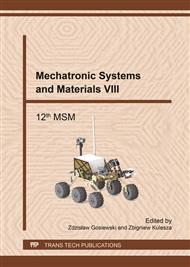p.3
p.11
p.20
p.33
p.38
p.45
p.51
p.59
Affect in Robots for Interaction and Control - Challenges for the Engineer
Abstract:
This address will briefly consider the challenges and opportunities that arise from the integration of affect into robotic systems. Six challenge areas are identified as of particular relevance to robotics engineers. The first challenge is to sufficiently refine the display of affect by mechanical devices to give the impression or appearance of emotional engagement. The second challenge is to recognise affect as displayed by others, most particularly by human users. These two challenges relate primarily to the presentation of affect, there are related questions about how to best use it. It is widely assumed, though unproven, that these will improve the acceptability of robotic devices employed in the social and service sectors. The third challenge is to understand what about affect that can and cannot be understood in scientific and engineering terms. Much is open to measurement and modelling, but some - such as the notion of feelings - remain highly problematic. The fourth challenge is to take that analysis and build affect fully into the social control system of the robot, leading to essential progress in robot autonomy and working towards our understanding of the role and mechanism of natural affect. The fifth challenge is to find profitable application for affective robotics. One potential outcome is to build an enhanced level of behavioural compatibility between human user and robotic device. The sixth challenge as engineers is to ever take care - to ensure that reality does not, and is seen not to, match the popular apocalyptic expectation engendered at every opportunity by dramatist and film maker for robots imbued with "emotions".
Info:
Periodical:
Pages:
3-10
Citation:
Online since:
July 2017
Authors:
Price:
Сopyright:
© 2017 Trans Tech Publications Ltd. All Rights Reserved
Share:
Citation:


